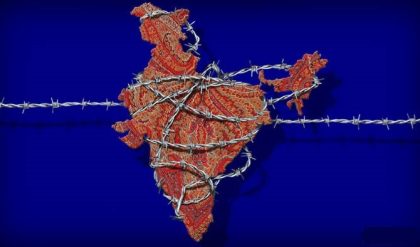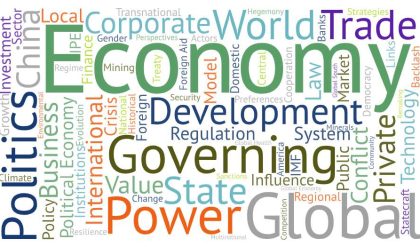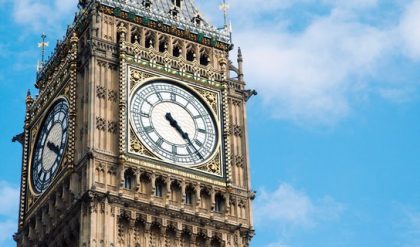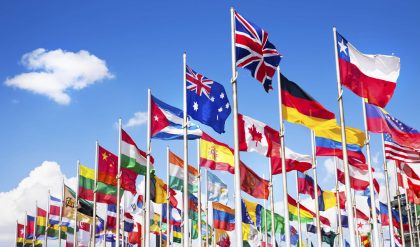Despite the fact that some consider the beginnings of the political cycle theory in the works of Joseph Schumpeter (1939), it is more commonly believed that it was derived from the article of Michał Kalecki published in 1943.
According to (Kalecki, 1943), business cycles are the result of periodical changes of proportions or power between employers and employees. Whenever the strength of employees and unions was on the rise, salaries were rising as well, and employers were losing profits, they were resorting to countermeasures. These actions were meant to cause recession causing in turn unemployment and leading to victory over unions (Hermann, 1995 p. 80). In addition, although the governments are able to influence economic magnitudes, they will not tend to reach the full potential of economy (full employment), due to the ‘power of vested interests’13. Such an approach was later adopted also by Nicholas Kaldor, who argued that such ‘interests’ were hostile towards the Keynesian economic policies adopted after WWII (Arestis, 1996 p. 27). There are more advanced theories and descriptions of this phenomenon preached nowadays. Research on business cycles had been developed in the mid-1970s in the U.S. to reach its apogee in 1980s. As a result, research findings gained an established position in political economy and in textbooks on macroeconomics. There are four groups of models of the political business cycles:
• Model with opportunistic parties and with irrational voters—Nordhaus’ opportunistic model;
• Model with opportunistic parties and with irrational voters—rational opportunistic model;
• Model with ideological parties and with irrational voters—ideological Hibbs’ model;
• Model with ideological parties and with rational voters—rational ideological model. All of these models are based on the following assumptions:
• the economy is described by the Phillips curve,
• inflation is directly controlled by politicians,
• election date is known in advance and exogenously fixed.
1st PBC model
The first of political business cycle models was the Nordhaus’ model (Nordhaus, 1975). It was based on the following assumptions:
• inflation expectations are adaptive,
• politicians are opportunists (i.e. they only care about holding office),
• voters think “retrospectively”—they judge the authorities based on how they ruled so far and without anticipation of the future outcomes of their policy. This theorem explains how measures leading to economy development are applied by the government in order to shape the economy before the elections and they are intended to increase chances of re-election. It was also based on an assumption of adaptive expectations, i.e. voter’s decisions are based on a retrospective evaluation of macroeconomic results, and inflation expectations will be fitted accordingly. In addition, Nordhaus assumed that voters are short-sighted and hence an opportunistic behaviour may appear repeatedly forming cycles. This was in turn based on assumptions that voters have an increased ability to forget the actions of manipulation before the next elections come. The Nordhaus’ approach takes into consideration changes of business cycles caused with election date and not by ideology of political parties, among other possible factors of political nature that could influence business cycles. Nordhaus’ model predicts:
• pre-election economic growth, lower unemployment, inflation rise and
• a post-election economic slowdown.
2nd PBC model
Soon after Nordhaus’ paper, another stream of research within the opportunistic school appeared. The second kind of PBC models introduced an element of classical thinking. It was initiated by (Kydland, et al., 1977) publicized in 1980s together with the critical approach of Keynes theories by (Barro, et al., 1983), and developed after 1986 by K. Rogoff, A. Sibert, T. Persson, and G. Tabellini. It was opposite to earlier macroeconomic ideas of Keynes, which were lacking empirical proof. This approach assumes that politicians and voters share the same preferences and require rationality in inflation expectations (Gartner 1999, p.705- 706). The assumptions are as follows:
• inflation expectations are rational,
• politicians are opportunists,
• voters choose a candidate from whom they rationally expect maximum benefits.
The retrospective point of view characterizes so-called “naïve voters”, which are opposite to “rational voters”, blessed with an “expected utility” point of view. The latter group understands and supports central role of rationality and coordination of monetary policy, which in turn constitutes the foundation of the European Monetary System (Gärtner, 1999 p. 706), which are the matters directly connected to the issues of the central bank’s independence (see next subchapters). This group of models can be divided into two subgroups.
1) In the first group, government cannot influence the real measures, thus there are only changes in inflation cycle. This is due to the long-term Phillips curve.
2) The second variant has yet additional assumption of asymmetric information between the government and voters—the first one know their powers, the second group is ignorant. Hence, the government can actually influence the real economy and the results are identical to the Nordhaus’ model






Comments are closed.